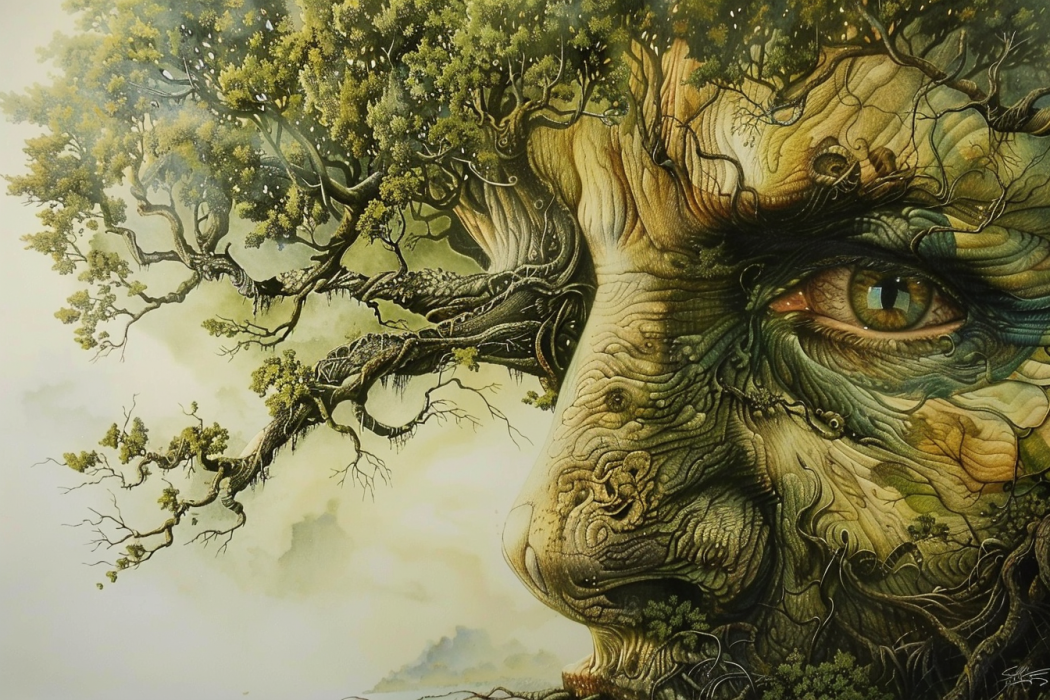Symbols Of Wisdom Across History and Cultures
Wisdom is the ability to use knowledge and experience to make good decisions and give helpful advice. Different cultures have various symbols for wisdom. For example, the owl in Western cultures represents wisdom because of its keen sight. In Hinduism, the elephant is a symbol of wisdom due to its memory and strength, while in Buddhism, the Bodhi tree is a symbol of wisdom because it’s where Buddha gained enlightenment. These symbols show how different cultures honor and understand wisdom.
Let’s learn more about symbols of wisdom around the world.
1. Owl

Owls symbolize wisdom due to their association with Athena, the Greek Goddess of Wisdom, who valued the owl’s keen eyes and serious demeanor. The Little Owl (Athene noctua) was Athena’s sacred bird, believed to have a magical “inner light” for night vision. In Greek culture, owls were seen as protectors and symbols of victory in war. They were also featured on Athenian coins, watching over trade.
Owls are also often depicted as solitary creatures, spending much of their time alone and observing their surroundings with a calm and patient demeanor. In Western culture, they are frequently portrayed as wise old owls wearing glasses and reading books like sages.
Read More: Owl Symbolism Across Cultures
2. Elephant

Elephants are intelligent animals that can quickly learn and remember simple skills. In religion, elephants hold a sacred role, and many temples have elephant statues. In Hinduism, the head of the god Ganesha is an elephant’s head. Elephants are beautifully decorated for use in large processions in Kerala. In Buddhism, the elephant is a symbol for the acceleration of wisdom .
At the beginning of their practice, the uncontrolled mind is symbolized by a wild gray elephant that can run amok and destroy everything in its path. After practicing Dharma and meditation, the now controlled mind is symbolized by a powerful and majestic white elephant that can go anywhere it wants and overcome all obstacles in its path.
3.Bodhi Tree

The Bodhi tree symbolizes wisdom in Buddhism because it’s the specific tree where the Buddha attained Enlightenment in Bodh Gaya, India. The Mahabodhi Temple marks this spot, with a descendant of the original tree. Another tree in Anuradhapura, Sri Lanka, believed to be from a cutting sent by King Ashoka, is also sacred. Many other trees worldwide are considered descendants of the original Bodhi tree. Prayer beads made from its seeds are highly valued.
4. Book

Books are symbols of wisdom because they contain knowledge and insights accumulated over time. They represent the collective wisdom of humanity, encapsulating ideas, experiences, and perspectives from various cultures and time periods.
Books are guides, mentors, and sources of inspiration that empowers us to make informed decisions, solve problems, and navigate life’s complexities with greater wisdom and clarity.
5. Serpent
Snakes are often seen as symbols of wisdom because they represent both light and dark, good and bad. In the Bible, the serpent in Eden is clever, leading Adam and Eve to knowledge. Across many myths, snakes are respected as wise, ancient beings who often help humans.
In East Asia, snake-like dragons protect fertility and the changing seasons. In ancient Greece and India, snakes are seen as lucky and protective. Even Jesus told his followers to be “wise as serpents,” and some early Christian groups saw the serpent as a guide to truth and salvation. In Mesoamerica, the feathered serpent god Quetzalcoatl stands for creation, knowledge, and art, which is another link between snakes and wisdom.
Read More: Snake Symbolism Around The World
6. Fox

The fox is renowned for its legendary adaptability and cunning intellect. It possesses remarkable skills in evading hunters and their dogs, often outmaneuvering them with ease. Research suggests that foxes excel in various cognitive abilities, surpassing even dogs in problem-solving, memory retention, spatial awareness, and overall intelligence.
In the fables of Aesop, the famous Greek fabulist from the 6th century BCE, the fox plays a prominent role, appearing in 42 out of a total of 358 stories. Notable tales include “The Fox and The Grapes” and “The Fox and The Stork.”
In the early mythology of Sumerian civilization, the fox holds significance as one of the sacred animals and serves as the messenger of the goddess Ninhursag. Similarly, the ancient Moche people in Northern Peru depicted the fox in their art as the wisest of warriors.
In European folklore, foxes were associated with cunning and deceit, sometimes symbolizing the Devil during the Middle Ages and Renaissance. The stories often revolve around Reynard the Fox, a clever trickster who interacts with other anthropomorphic animal characters, humorously reflecting medieval life.
Reynard the Fox’s adventures frequently involve him outsmarting other characters or avoiding their attempts to retaliate. His main adversary is typically his uncle, the wolf Isengrim. The medieval tales of Reynard offer a satirical glimpse into society, portraying various animals with human-like qualities in amusing and often moralistic narratives.
👉 Read More: Fox Symbolism Across Cultures
7. Lotus Flower

The lotus symbolizes wisdom in Buddhism because it grows in muddy water yet rises above it clean and beautiful, just like an enlightened mind rising above suffering and desire. According to legend, lotus flowers bloomed wherever the baby Buddha stepped, marking his path with signs of awakening. The Lotus Sutra, a key Mahayana text, highlights the lotus as a symbol of spiritual purity and the journey toward enlightenment.
Each lotus color has a special meaning: white stands for purity, red for love and compassion, blue for wisdom, and gold for full enlightenment. In Tibetan Buddhism, the mantra OM MANI PADME HUM calls on the bodhisattva Chenrezig, where the lotus represents wisdom and the jewel symbolizes skillful action. The lotus’s growth from a closed bud to full bloom mirrors the stages of spiritual progress.
👉 Read More: Lotus Symbolism and Meaning Across Cultures
8. Tortoise
Turtles have long been seen as symbols of wisdom and deep knowledge, largely because of their long lives and calm, steady nature. In Hindu mythology, the god Vishnu became a tortoise to help churn the ocean and uncover the nectar of immortality. The sage Kasyapa, considered an ancestor of humankind, is also said to have taken a tortoise form.
In many cultures, turtles appear in stories that teach lessons. Aesop’s tale of the tortoise and the hare shows how patience and cleverness win over speed and pride.
Ancient people even used turtle shells to predict the future, believing the cracks in their backs carried messages from the spirit world. In Vietnam, turtles are tied to learning and wisdom. Stone turtles at the Temple of Literature carry the names of honored scholars. African folklore also features wise tortoises like Ijapa in Yoruba stories or Mbe Nwa Aniga in Igbo tales, who outsmart others with their cleverness and calm thinking.
👉 Learn More: Turtle Symbolism Across Cultures
9. Yin-Yang
Yin and Yang are complementary forces. Yin represents darkness, stillness, and femininity, while Yang stands for light, activity, and masculinity. They’re not strict opposites but interconnected parts of a whole, always shifting and balancing each other.
Rooted in Taoism, both arise from the same source and rely on each other. Their traits aren’t moral labels but natural dynamics. Understanding their constant interplay helps us see the world as ever-changing and deeply connected.
10. Wolf

Wolves are known for their smarts and strength, making them symbols of wisdom and power worldwide. When hunting, they work together in packs, using the land and weather to their advantage to catch prey. They’re clever, able to change their tactics based on different factors like weather and prey behavior.
In Serbian stories, wolves represent bravery. If a woman lost many babies, she might name her next son Vuk, believing witches feared wolves and wouldn’t harm a child named after them.
In Norse mythology, Fenrir is a giant wolf, son of the god Loki. Predicted to cause chaos during Ragnarök, the end of the world, the gods tried to control Fenrir’s power. They raised him in Asgard but eventually had to bind him to prevent disaster.
Read More: Wolf Symbolism Across Cultures







